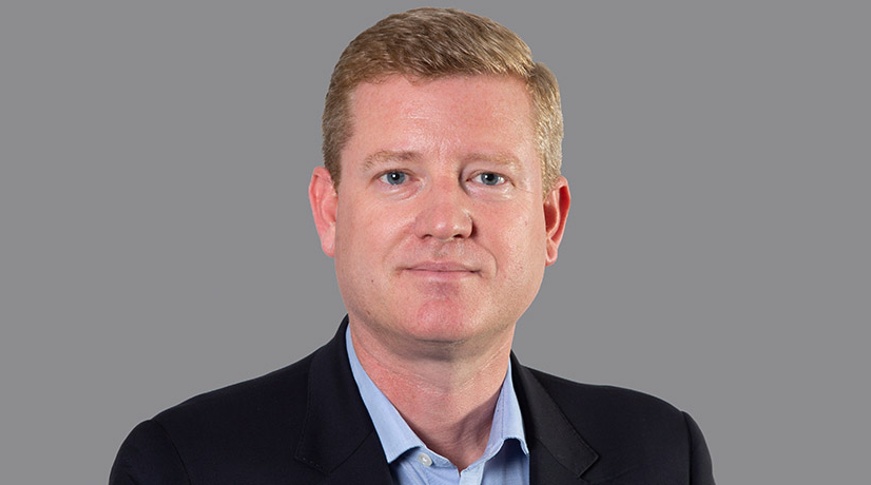FOR PROFESSIONAL INVESTORS AND/OR QUALIFIED INVESTORS AND/OR FINANCIAL INTERMEDIARIES ONLY. NOT FOR USE WITH OR BY PRIVATE INVESTORS. CAPITAL AT RISK. All financial investments involve taking risk and the value of your investment may go down as well as up. This means your investment is not guaranteed and you may not get back as much as you put in. Any income from the investment is also likely to vary and cannot be guaranteed.
Many investors today regard businesses’ ESG efforts as an intangible output you can’t see, let alone feel, the immediate impact of, but they understand that the benefits of a more sustainable society are likely to be felt many years down the line.
But for fund managers of a certain age, the benefits of a culture of sustainability have become all too tangible as the years of experience have slowly morphed into decades.
As a young accountant, I remember walking around steamy chemical plants in the north west of England, dumbfounded at the amount of fluid leaking onto the floor – not to mention my shoes.
Today, better education around sustainability has fortunately made such scenes a thing of the past. Every cubic inch of fluid that leaked onto the floor represented a waste of water, energy and/or raw materials, and this is before we even get to the potential environmental impact.
These memories were jogged on a recent trip to Slough, home to John Crane, which accounts for 36% of revenues to parent company Smiths Group (which we own in the Artemis Income Fund).
Surprisingly for a company involved in the oil & gas sector, John Crane’s site was immaculate, more akin to a high-tech laboratory in Silicon Valley than a leaky chemical plant in Lancashire.
Perhaps this reflects the company’s future direction – despite its involvement in oil & gas, we believe it has a key role to play in the move towards cleaner sources of energy.
Liquefied natural gas’s role as a transitional source of energy
John Crane’s seals are plumbed-in to 80% of global liquefied natural gas (LNG) infrastructure.
This is important, as between 2010 and 2019, the International Energy Agency (IEA) estimated that a trend for switching from coal to gas saved about 500 million tonnes of CO2 – an effect equivalent to swapping 200 million petrol-powered cars for electric vehicles (EVs) running on zero-carbon electricity.
In total, about 30%1 of John Crane’s sales now come from products and services that provide decarbonisation benefits. It has been making hydrogen gas seals for more than 40 years, and today its seals feature in 80% of the world’s carbon capture projects2.
Many companies in the renewable energy sector have struggled over the past couple of years, partly because low barriers to entry have made it difficult to see how they will protect profits from competition – if they are making any at all, that is.
This isn’t a problem encountered by John Crane, for reasons that become obvious once you understand what its products actually do.
What is a mechanical seal?
John Crane’s mechanical seals, which are made up of rotating and stationary parts, are embedded deep into pumps, mixers and compressors to prevent gas or fluid leakage.
Basic seals can cost as little as $1, but John Crane sells some of its products for as much as $100,000. How is this possible?
The company makes highly engineered and often bespoke seals for mission-critical applications. These are required to operate at speeds of up to 50,000 revolutions per minute, temperatures of up to 3,500C and pressures of up to 450 bar(g) (1.013 bar is equivalent to atmospheric pressure at sea level).
At best, the failure of a seal at these conditions can lead to significant downtime. At worst, the implications don’t bear thinking about. This is not an area where it pays to cut corners.
The strength of John Crane’s reputation in manufacturing and ongoing aftermarket support (where it makes more than 90% of the profit it derives from these seals3) means we expect more structural growth to come from customers upgrading existing equipment and infrastructure to improve efficiency and safety.
Global opportunity
And this is a truly global business, making only a small proportion of revenues from the UK.
John Crane has 3,000 engineers in 200 locations, who have installed 3 million seals to date4. The engineers are often based close to key customers, aiding the provision of aftermarket support and allowing them to develop new products in response to client demand.
Such a global business requires a diverse leadership and 70% of the company’s management team were born outside the UK, while 80% were promoted internally5. In addition, while EngineeringUK’s 2022 report Women in Engineering found that women accounted for just 16.5% of roles in this industry, John Crane ensures its graduate recruitment programme is split 50:50 between genders.
In our view, John Crane offers the perfect rebuttal to claims that the UK market is a sleepy backwater of ‘old economy’ businesses lacking the innovation to drive future growth. Just as importantly, it is a company that investors can hold without feeling like they are getting their hands dirty. Or their shoes, for that matter.
1, 2, 3, 4 & 5Source John Crane


